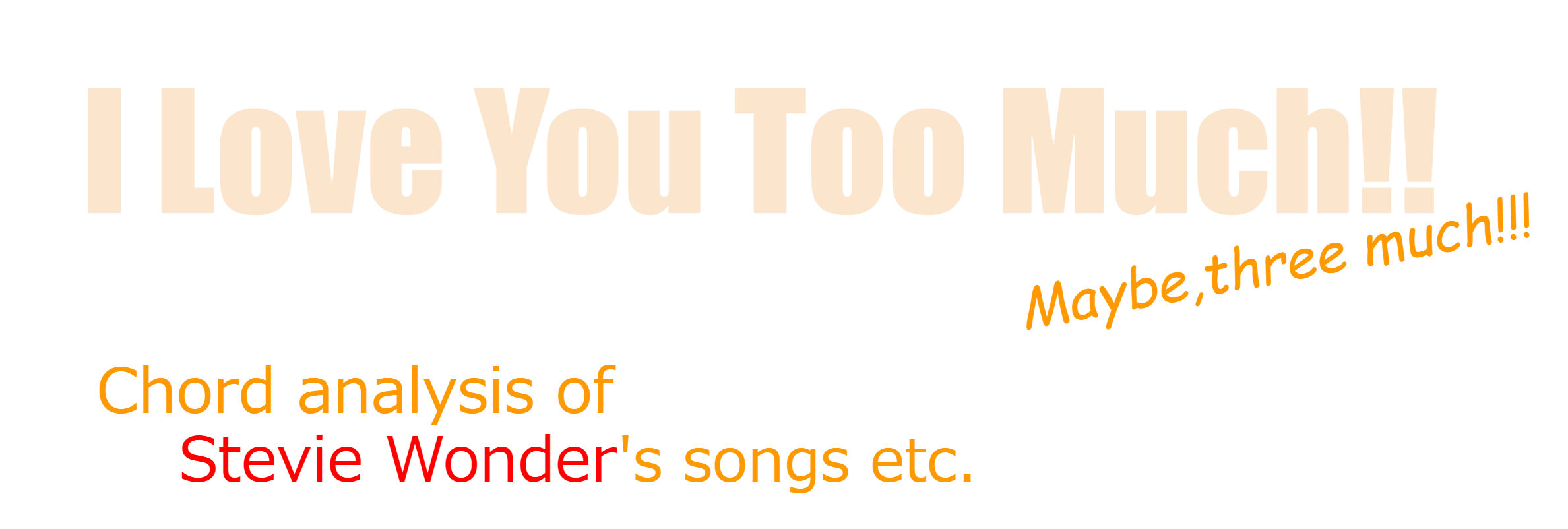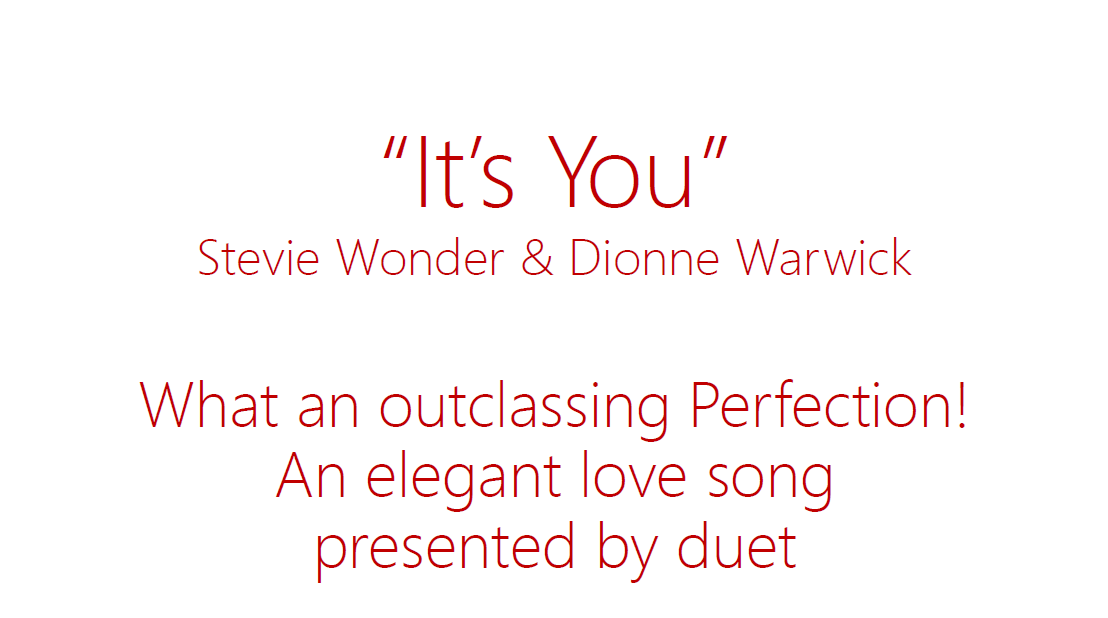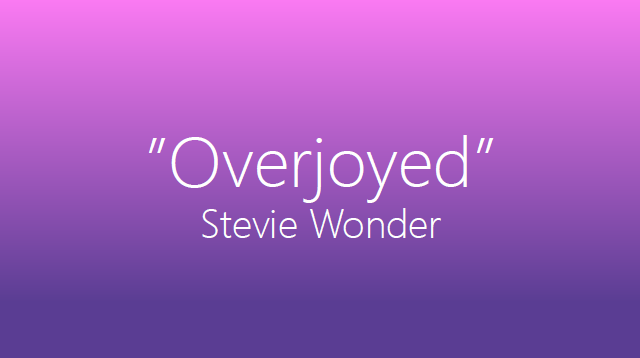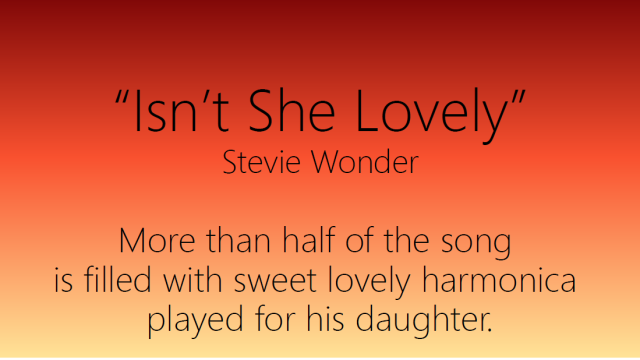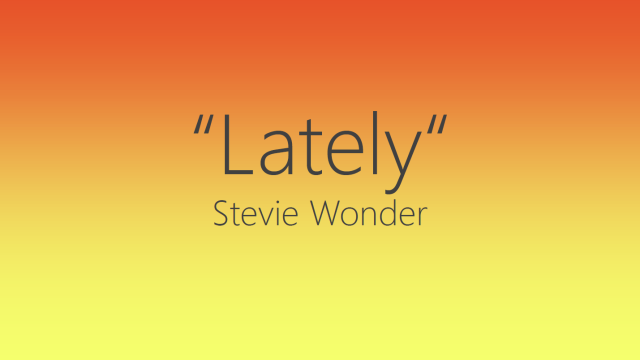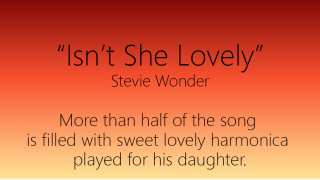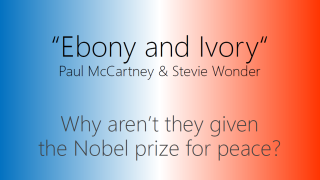Introduction
I have been wondering if I was around 14 years old and having looked up, that’s just 1983 when I went to 2nd grade of a junior high school, “Colour By Numbers by Culture Club, “Seven and the Ragged Tiger” by Duran Duran and so on were released. Yes that’s the time when I started listening to foreign music.
Then, some times later, I heard a song played in the streets profusely. When I looked into the record store while I was wondering who is singing, I remember Stevie Wonder’s album “The Woman In Red” was on sale with great reviews.
And the song played again and again profusely was, yes, that’s it, “I Just Called To Say I Love You”. “It’s You” here I’m picking up was also played often together with the song. Ha? Who’s composing such good songs one after another? That’s the first opportunity for me to find Stevie Wonder and I have been a much buff since then. I still remember the strong impression until today, which brings me back to the memory. .
I think this song is quite elegant, and such elegance may come from the beutiful piano arrangement throughout the song, and the high-quality vocal work with Dionne Warwick.
This is a literally love song sung out “It’s you, it’s you. You’re the angel sent from heaven above”. The chords used are really amazing. Here we go. Let’s check the chords up!
Account for chords
Intro
Excuse me to alert one point before my commentary.
Usually, keys Stevie uses are overwhelmingly denominated by black keys (perhaps, that comes from the easiness to play even for blind people).
But this song starts with key:C, which is very unusual among Stevie’s song. (As far as I know, the other song that uses black keys mainly is “Stay Gold”with key:G, isn’t it?)
The chords progression is unprecedented leveled complication, it’s a beautiful as well as steady intro, though.
Let’s see the following.

Even if you might lose your spirit of the struggle, don’t worry but just follow the progression of right hand, which is;
Em7→Am7→Em7→Dm7→C#m7
So you can see all you have to do is just keeping on playing m7 chords. Let’s see the keyboard figures as below.
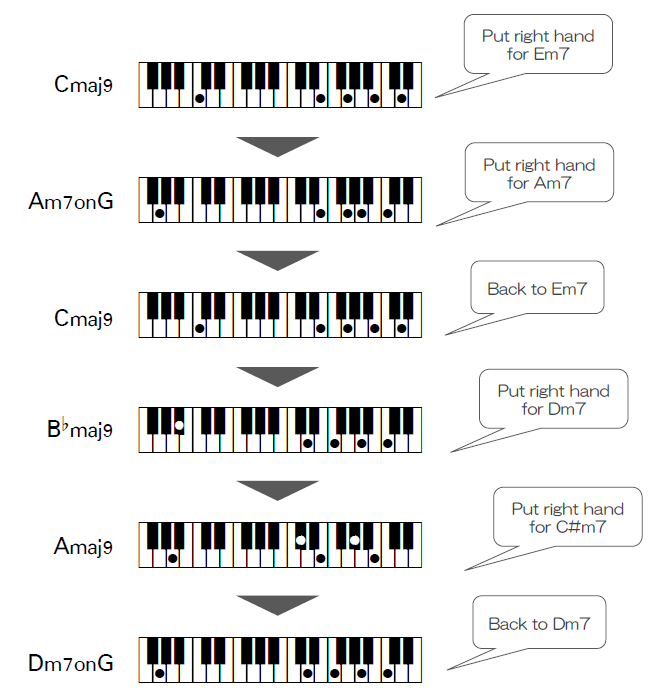
As I’ve mentioned in other entries, the fingering flows smoothly despite the chords names look somewhat difficult.
If you play as above,it sounds like this.
Actually, this intro chords progression is appearing later as the bridge for vocal part.
I’m wondering whether he came up with the chords progression for the intro part first and used it for the bridge later, or done up with the bridge on the track to the melody and adopted it for the intro. Probably, himself is the only one to know the process since there may be no commentary to pursue that.
1st Verse
See the following.
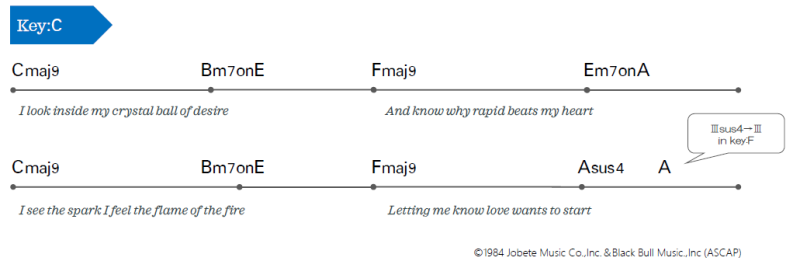
Although the second chord, Bm7/E is used casually, you can see the chord only in tracks on key:A or at most key:G actually. It’s really rare to see it on key:C. It sounds Bm7 or Em7 when we listen to the melody actually. haha, it’s Bm7/E in fact. Em7/A is also rare to see and let me stop talking about,because it same to Am9, G/A or such kinds.
2nd Verse
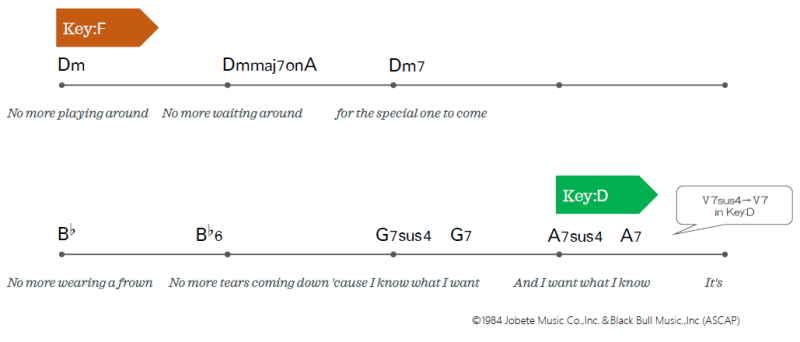
Deeming Asus4→A just before as Ⅲ and skip to Dm. The key has modulated to Key:F.
It’s quite popular way for Stevie to replace a standard progression <Ⅵm→ⅥmM7→Ⅵm7> by <Ⅵm→ⅥmM7/Ⅲ→Ⅵm> adding base sound.
At the end, he placed an incomprehensible chords progression, G7sus4→G7→A7sus4→A7, and then modulated to KeyD.
What a freewheeling idea he produces!
3rd Verse
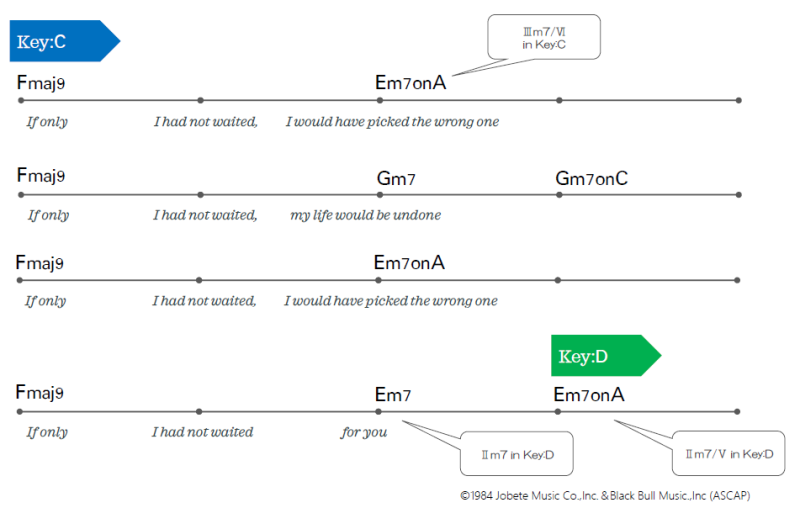
The second chord is Bm9 in the score I have. But E note appears in the vocal part so F#m7/B may be also possible in my thought.
I think this song consists of fraction chords like this. He ended this verse with Dm7→Dm7/G(Ⅱm7→Ⅱm7/Ⅴ)by force and modulated to KeyC so as to be connected to the bridge.
What a chords progression he manipulates freely and flexibly!
Bridge
As I mentioned at the beginning, here reappears the chords progression in the intro part again.

At the end, insert Gm7 → C7 by force to shift to FM9 smoothly in the 4th verse.
4th verse
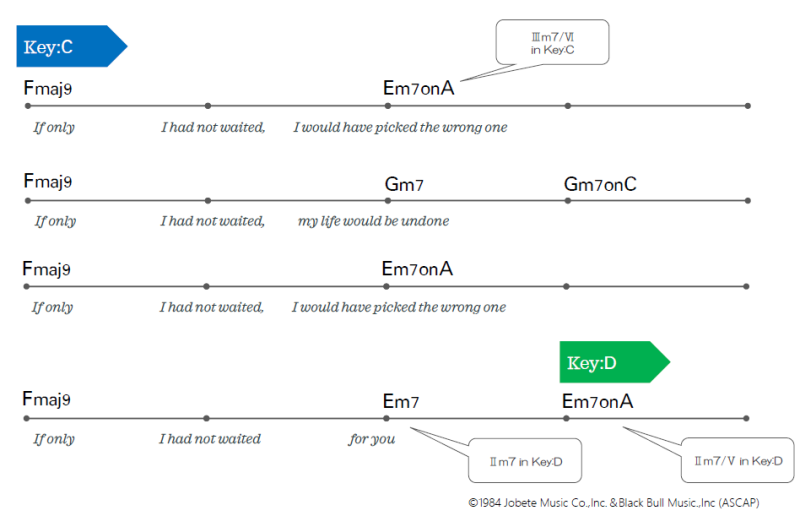
Although the vocals harmony here sounds so difficult, so full-fledged professional, Dionne easily completed it.
The strings here sound so comfortable, it is basically simple, though.
At the end of this verse, Stevie took the trouble to insert Em7 → Em7/A and modurated to Key:D and ran into the harmonica solo.
He uses the same Em7 in a different manner. It’s an advanced play, isn’t it?
Harmonica Solo

Despite of the harmonica solo to follow the 1st verse progression as Key:C, why he started to play it after changing the key to D!?
There could be no end if we are too keen to pursue the reason why. So let’s go to the next.
The long note sounds just before entering the 5th bar has a little impact, doesn’t it? This is D note and no D note in C#m7/F# although D note is included in Gmaj9 just after, so the brief moment of discomfort can generate the impact. It’s a short solo, but his sense shines out on the other hand.
From here on, either of the above cords progressions repeats.
Series of high techniques are realized while beautiful as well as natural melody is going on. He manipulated so-called fraction chords arbitrarily and repeated the modulations, which makes us feel he enjoyed playing. Anyway, this is a song in my favorites.
In Conclusion
By the way, have you ever heard of a female vocalist named Dionne Warwick? I heard she is a cousin of Whitney Houston.
Even if you don’t know her, you’ve probably heard the song named “That’s What Friends Are For”, that is a hit song composed by a master, Burt Bacharach in 1985 (I’m slightly embarrassed to come out that I haven’t know the original one was sung by Rod Stewart in 1982, having looked up with Wikipedia…)
The lead vocalist was Dionne Warwick, and her co-players (Friends) were Stevie Wonder, Gladys Knight and Elton John, all of whom are very talented to sing the song together.
No wonder, the song won song of the year and other awards in Grammy Awards. When I watched the scene on TV in real time, I was so young and overwhelmed with Dionne’s volume of voice rather than her voiceYou’d better listen to even just first 10 seconds of her voice no question in the movie below.
I can’t help thinking their skeletal frame from the nose to the mouth is completely different from whatever Japanese have…Of course, the other two singers are so great to sing the song out and Bacharach himself who played the piano looks so enjoying.
